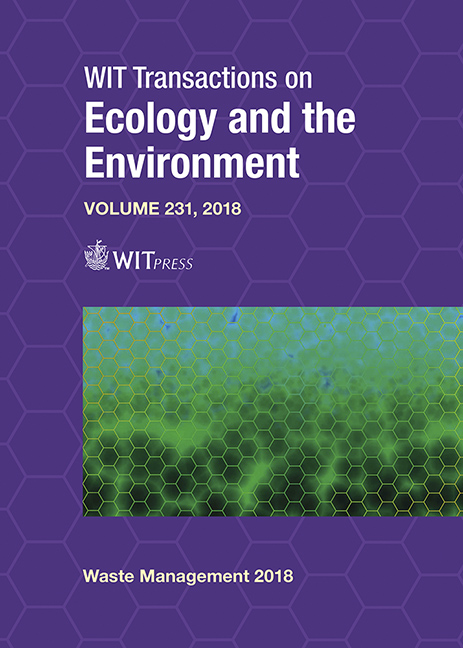WASTE MATERIALS AS SUBSTRATES IN VERTICAL FLOW CONSTRUCTED WETLANDS TREATING DOMESTIC WASTEWATER
Price
Free (open access)
Transaction
Volume
231
Pages
8
Page Range
339 - 346
Published
2019
Paper DOI
10.2495/WM180311
Copyright
WIT Press
Author(s)
ATIF MUSTAFA, MEHMOOD ALI
Abstract
Vertical flow constructed wetlands (VFCW) are considered to be one of the most efficient type of wetlands and require a lesser footprint in comparison to other wetland types. Substrate is an important component of wetland. We used the common gravel (VFCW 1) and three waste materials: concrete (VFCW 2), slag concrete (VFCW 3) and coconut husk (VFCW 4) as substrates in experimental wetlands. All four experimental wetlands have been constructed in uPVC pipes, diameter and height of each VFCW was 89 mm and 1000 mm, respectively. A 15 mm diameter perforated pipe that penetrates to the wetland bottom was installed in each wetland for passive aeration. Canna indica, an ornamental plant was planted in all four wetlands. Pre-treated wastewater from a wastewater treatment plant was added manually to all VFCW. The maximum plant height observed was 78.7 cm in VFCW 1 while minimum plant height observed was 53.3 cm in VFCW 3. The four VFCW removed all monitored contaminants with good removal efficiencies during the 8 months monitoring period: suspended solids (79%, 74%, 74%, 54%); BOD (54%, 42%, 42%, 2%); COD (54%; 47%; 44%, 34%); ammonia-nitrogen (54%, 46%, 38%, 38%), ortho-phosphate (67%, 61%, 64%, 53%); and fecal coliforms (55%, 40%, 14%, 52%). DO levels increased for VFCW 1 and 4 and nitrate levels increased in all wetlands confirming the nitrification process. For the various waste materials used following were our observations: VFCW 2 performed the best for organic matter and ammonia-nitrogen removal while VFCW 3 outperformed others for phosphorus removal and VFCW 4 had the highest percentage of fecal coliforms removal.
Keywords
waste, substrate, vertical flow, constructed wetland, concrete, slag concrete, coconut husk, gravel, domestic wastewater





